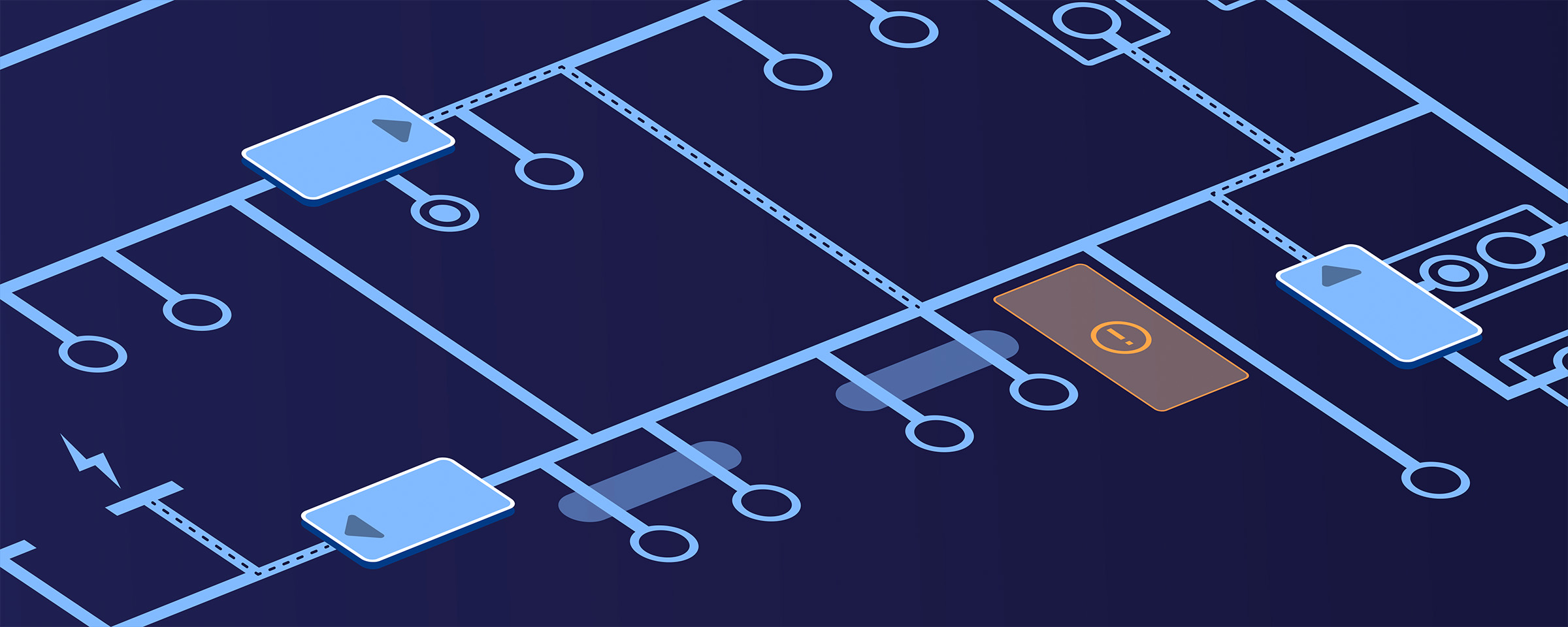
How networked systems renew intralogistics
Today, cars are manufactured in a row. This only works if the right material is in the right place at the right time. While production is already highly automated and optimized, intralogistics is quite traditional. Our client, SYNAOS, is developing an integrated solution for simultaneous control, task, and route optimization of heterogeneous fleets of autonomous guided vehicles. In this future scenario, humans will no longer take the leading role.
But of course, this transformation does not happen overnight, but step by step. Even the best software cannot compensate for all technical problems. What happens if the WLAN connection fails? How do you deal with defective vehicles? Despite all the trust in software, people will continue to monitor automated processes in the future and adjust parameters such as the number of available vehicles.
Thinking and defining intralogistics holistically
Our transdisciplinary team supports SYNAOS in finding the right balance between current conditions and the fully automated vision as well as between man and machine. Our expertise in the fields of artificial intelligence and robotics enables us to assess what the system can already control autonomously and where the limits of current technology lie. What information and support does the system need from humans to coordinate vehicles autonomously? We use our logistics background and methods from UX design to find out how the SYNAOS system can be integrated into existing processes in factories. Together we design an intuitive user interface for employees in factories. It will enable the control center and maintenance staff to perform tasks such as monitoring orders or repairing vehicles more efficiently in the future with the help of tailored content combined into one system.
Accompanying user research takes an essential part within the process to analyze existing requirements and test developed concepts. In the exchange with the employees, who have already gained experience in handling autonomous vehicles and the systems currently in use, it becomes clear that in order to put the AGVs into productive operation, there are still some areas that are missing. Too many errors prevent smooth operation, and too often, manual intervention is still required. Helpful information, such as delays, is not accessible since the necessary data for this is not yet evaluated.
The cooperation with SYNAOS is agile - we use our experience in software development not to design a castle in the air for the future, but to respond to current circumstances and help shape the next version of the system sustainably.
Daily operation in modern intralogistics
The SYNAOS system covers all requirements for a highly efficient, uninterrupted operation of driverless transport vehicles. Nevertheless, there are situations in which human intervention is required. For example, in the event of a vehicle defect or if a crate has been left standing on the road. With increasing experience, problems such as these will decrease - whether because the vehicles are becoming more technically sophisticated, or because it is better understood how to plan factories for the operation of driverless vehicles, or because those responsible are notified in a targeted and situation-specific manner. Routine tasks can thus be automated step by step - whereas regular maintenance work remains in the hands of people for the time being.
In human hands: configuration & analysis
In order to work efficiently at all and optimize their processes, machines need "input" from people - now as they will in the future. It begins with the planning of the production hall and extends to the adaptation of workflows during runtime. Because there will always be parameters that change even while a system is in use: The number of vehicles can change quickly due to external factors. Limit values must be adapted to new conditions, and it must be defined when people should be notified by the system at all. Such an "optimization of the optimizing system", in which humans are involved, only works with reliable and prepared data on past and current functionality.
A future-proof user experience design concept for a highly automated system must, therefore, consider at least two aspects:
- The anticipated change in processes in daily operations will have a strong impact. Where monitoring and manual corrections are still carried out today, in the future, only individual, situation-specific notifications will be necessary instead of a conventional user interface.
- The permanent optimization of processes will be supported in the future - perhaps even more than today - by analysis tools.
So, people will continue to take responsibility for many tasks despite the high degree of automation in modern intralogistics. However, the field of activity is shifting from active, intervening, and monitoring activities to a position as a decision-maker who optimizes systems based on data evaluation.